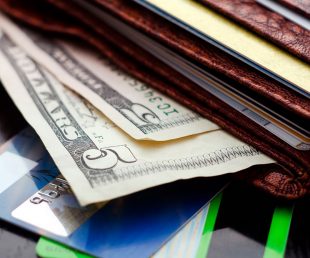When it’s time to purchase your first house, you’ll likely hear all kinds of advice, both financial and otherwise. As far as finances go, most first-time homebuyers already understand the upfront fees that come with purchasing a home—including things like a down payment (experts recommend paying 20% of the cost of the home to avoid paying private mortgage insurance) and closing costs. What they might not consider, however, are the additional purchases that can crop up during the first year of living in a new house. In fact, according to a study from the National Association of Home Builders, during the first year after closing on a home, buyers of newer homes spend about $10,601 on outside expenses, while buyers of older homes (qualified as those built before 2012) spend about $8,233. Either way, it’s a lot of extra money to consider.
While experts recommend that homebuyers anticipate paying about 1% of their total home price on repairs and other household needs each year, this number can rise quickly. Stay on top of costs by recognizing the most common first-year expenses that new homeowners are likely to encounter so you can better prepare to pay for them.
EXPENSE NO. 1: APPLIANCES
What that looks like: According to the NAHB survey, new homebuyers spent $3,094 on new appliances, while people purchasing existing homes spent approximately $1,889. Appliances can include anything from big-ticket items like washers and dryers and refrigerators to smaller ones like lawnmowers and televisions.
Ways to save: When it comes to appliances, if the item is nonessential and you can wait for holiday sales, you’ll likely save a pretty penny. Also keep in mind that when it comes to big-ticket items like a washer and dryer or refrigerator, it’s not always a good idea to go with the cheapest options. The items you use frequently will generate a lot of wear and tear, and you need them to last to make the most of your investment.
EXPENSE NO. 2: FURNISHINGS
What that looks like: It probably comes as no surprise that furnishings were a big expense for home buyers. According to the NAHB survey, new home buyers spend $3,778 on furnishings in the first year.
Ways to save: Remember that it’s not necessary to outfit your entire home with new furniture as soon as you move in, especially since you may already have some furniture that you can live with while taking your time to bargain shop for new items. Furnishings are also not necessarily an area where you need to get the biggest and best right away — online marketplaces through sites like Nextdoor, Facebook and Craigslist can sometimes have great deals on items that are like-new or barely used.
EXPENSE NO. 3: PROPERTY REPAIRS AND ALTERATIONS
What that looks like: First-time homebuyers might have some idea of changes they want to make to their new place ahead of time, but other repairs and alterations could come as a surprise. According to the NAHB survey, buyers of existing homes spend $4,085 on property alterations and repairs, while new homebuyers spend $3,729.
Ways to save: To start, be sure to pay extra attention to any old or outdated things during the inspection of your home, and ask to either have them replaced or have a warranty put on them for the first year of so after you move in. Also be sure to ask for any of the manufacturer or warranty information on new appliances in the house, that way you’ll have all that information on hand should something break. When it comes to home remodels, take your time and ask around for recommended contractors, and be sure to get multiple quotes.
EXPENSE NO. 4: PROPERTY TAXES
What that looks like: According to the U.S. Census Bureau, Americans spend $2,197 on property taxes each year, an amount that they likely aren’t prepared for.
Ways to save: In many cases, property taxes are included as part of your monthly mortgage payments. Unfortunately there’s not much you can do to save on property taxes, but knowing that you will be paying for them in advance means you can add them into your monthly budget so you aren’t surprised by the amount when they crop up. You can use a property tax calculator (like this one) to get an estimate.
Saving up enough money to purchase your first home is an incredible accomplishment, but it’s also important to prepare for future expenses, as well. Understanding what some of the expenses might be is a start, but it’s also key to have a savings account specifically for any emergencies that might crop up.![]()


